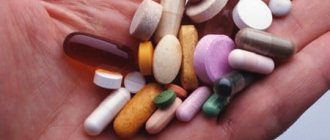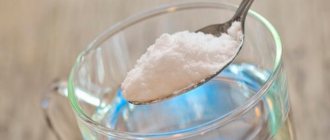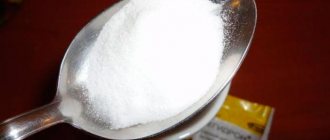Life without water is unthinkable. They told us about this back in school, remember? And everyone has also read that more than half of a person’s weight comes from H2O. When the body loses a significant amount of moisture, dehydration occurs and it threatens health. Restoring the lost volume of water is called rehydration. Performing this procedure helps to overcome many infectious diseases and save the lives of patients.
What is oral rehydration
To treat dehydration, the pharmacological industry produces a group of products called “oral rehydrating agents.” These can be tablets, granules, powders, which must be dissolved in water before use. They also sell ready-made solutions containing the required concentrations and required combinations of potassium, sodium, and chlorine in the optimal amount per unit volume of water.
In addition to salts, oral rehydrating agents often include glucose with the addition of extracts from medicinal plants or decoctions of cereals (wheat, rice).
Oral rehydration agents are ideal for quickly replenishing fluid deficiency during physiological and pathological dehydration of the body. In addition, rehydration solutions can be easily prepared at home.
Characteristic
Khaliku Oral Rehydration Product for Children contains potassium, sodium, chloride and glucose (dextrose) ions in the correct proportions as recommended by the World Health Organization (WHO) and the United Nations International Children's Fund (UNICEF). These components help not only restore the child’s water-salt balance, but also enrich the body with essential microelements.
The negative impact of toxins decreases, and the immune system begins to better fight viruses and bacteria. The functioning of the brain and vascular system improves. Glucose also promotes the absorption of water in the intestines and kidneys. Dextrose is involved in various metabolic processes in the body, enhances redox processes, and improves the antitoxic function of the liver.
Partially eliminates water deficiency. Dextrose, entering the tissues, is phosphorylated, turning into glucose-6-phosphate, which is actively involved in the metabolic processes of the body. It is completely absorbed by the body and is not excreted by the kidneys. Retains fluid, thus maintaining normal bcc, reduces the manifestations of intoxication, restores impaired metabolism, and supplies energy for biochemical processes.
Sodium citrate is the sodium salt of citric acid Na3C6H5O7. Sodium citrate in the body turns into bicarbonate and exhibits an alkaline effect, neutralizing acidosis and helping to reduce intoxication. Sodium chloride is responsible in the body for maintaining constant pressure in the blood plasma and extracellular fluid.
Its required amount enters the body with food. It has a detoxifying and rehydrating effect. Replenishes sodium deficiency in various pathological conditions of the body and temporarily increases the volume of fluid circulating in the vessels. Sodium plays an important role in neuronal signal transmission, electrophysiological processes in the heart, and metabolic processes in the kidneys.
When to rehydrate for diarrhea
Diarrhea is a pathological condition accompanied by frequent bowel movements. The stool becomes liquid and is repeated more than 3 times a day. There are acute and chronic diarrhea. Acute diarrhea lasts up to 2 weeks, after which it is classified as prolonged, then chronic. The causes of diarrhea are viral and bacterial infections, poisoning.
The danger with diarrhea is not so much diarrhea as dehydration and loss of microelements. Rehydration should be done at the first sign of diarrhea to prevent symptoms of dehydration.
The use of saline solutions for diarrhea has two purposes:
- Replenishing fluid and electrolyte losses in the body.
- Prevention of hypovolemia during prolonged diarrhea.
Oral rehydration is the simplest and most effective way to restore water and electrolyte balance in the body.
Causes of pathological fluid loss and its consequences
In various diseases, pathological fluid loss can be caused by various factors:
- In case of poisoning and infectious diseases, intoxication, vomiting and diarrhea are observed.
- With a cold, fluid loss is caused by the formation of snot and sputum, as well as high temperature, rapid breathing, and excessive sweating.
- Burns and wounds - liquid also evaporates from their surface.
- Some diseases cause frequent urination.
- Dehydration can be caused by significant blood loss or heat stroke.
The situation is aggravated by the fact that when sick, a person usually eats less or does not eat for several days in a row, and is not always able and willing to drink on his own - all this makes the intake of water into the body even more scarce compared to the normal state.
With pathological fluid loss, simply quenching thirst to equalize the body's water balance is not enough.
The consequences that can occur if the level of fluid in the body is not increased in time are potentially extremely severe, even fatal (sometimes this only takes a few days). High-risk groups include infants, small and middle-aged children, the elderly, pregnant women, and patients with any chronic diseases.
Danger of dehydration
Dehydration is understood as a lack of fluid and salts of potassium, sodium, and chlorine in the body.
There are mild, moderate and severe degrees of dehydration. Clinically, this is manifested by severe thirst, dry mouth, muscle spasms, drowsiness, dry skin, rare urination and constipation.
With severe dehydration, the heart begins to beat faster, consciousness becomes confused, the body begins to feel feverish, loss of consciousness is possible, blood pressure drops, and the patient feels a very rare need to urinate. Long-term dehydration can be complicated by damage to muscles, joints and liver, and urolithiasis.
Symptoms of needing fluid replacement in children
Diarrhea is a fairly common disease in children, the etiology of which in most cases is associated with infections of the gastrointestinal tract.
According to pathogenesis, there are several types of diarrhea - secretory (only the small intestine is affected), invasive (the lower section is affected), exudative, motor and osmotic (rotavirus infection). More often, children experience osmotic diarrhea, a clear sign of which is bloating, moderate pain, and body temperature. During such a malaise, it is forbidden to consume osmotically active components of pickles, nuts, chips, spices and spicy foods.
Dehydration develops quite quickly. The lower a person’s body weight, the faster the fluid leaves the body. Accordingly, dehydration is considered more dangerous for children in the first year of life than for adults.
Fluid loss can be recognized by several symptoms:
- pallor of the skin,
- dry mucous membranes,
- sunken eyeballs,
- lack of appetite,
- increased heart rate,
- drowsiness, lethargy,
- decreased physical and mental activity,
- moodiness, anxiety,
- lack of tears when crying,
- blood in the stool,
- high body temperature,
- prolonged absence of urination.
In young children, a characteristic symptom of dehydration is the retraction of the fontanel.
Symptoms of fluid deficiency vary depending on the severity. Mild dehydration results in severe thirst. A newborn baby can continuously suck on the mother's breast.
A moderate degree of dehydration is indicated by a dry surface of the mucous membranes, a decrease in the amount of urine produced, and the viscosity of saliva. At this stage, the need to replenish fluid is indicated by the sinking of a large fontanelle.
We recommend reading
- How long does diarrhea last with rotavirus?
- What diseases may diarrhea after a fatty meal indicate?
- Rules for the treatment of diarrhea in children
In severe dehydration, the skin becomes noticeably dry and wrinkled, especially in the mouth area. The baby's eyelids do not close, secretory anuria is observed (urination is completely absent). This condition indicates a significant loss of potassium and requires immediate hospitalization of the child.
In rare cases, with excessive loss of fluid, difficulty swallowing, swelling of the tongue, problems with the musculoskeletal system, spasms of the abdominal muscles, and cyanosis of the skin may occur. If the patient experiences the listed symptoms, confusion, hallucinations, loss of coordination, convulsions or fainting, urgent hospitalization is necessary.
Timely rehydration for severe diarrhea in young children can prevent the development of such symptoms. The sooner the necessary assistance is provided to the victim, the less likely there are negative consequences in the future.
What information is missing from the article?
- What frequency of bowel movements is considered normal and what is considered a disease?
- More recipes to stop diarrhea at home
- Description of cases for contacting a doctor
- Review of drugs
- Is the disease serious?
Oral rehydration products
The WHO-recommended rehydrating agent for oral use has long been used, proven to be safe and highly effective:
- sodium chloride – 3.5 g;
- sodium bicarbonate – 2.5 g;
- glucose – 20 g;
- water – 1 l.
Currently, the improved WHO recipe is more often used, which is recognized as more effective and safe, especially for diarrhea in children caused by intestinal infections.
Recipe:
- sodium chloride – 2.6 g;
- trisodium citrate anhydrous – 2.9 g;
- potassium chloride – 1.5 g;
- glucose – 13.5 g;
- water – 1 l.
Rehydration products sold in pharmacies have a composition similar to the usual or improved WHO recipes. They are sold in the form of powders, tablets or granules, from which a solution is prepared for internal use.
in powders : Citraglucosolan, Humana Electrolyte, Reosolan, Gidrovit, Regidron, Orsol, Orasan, oral rehydration salt (ORS), Normohydron, Gastrolit.
In tablets : Gastrolit.
In granules : Maratonic, Regidare, Regidrin.
All of the listed drugs are recommended for patients without age restrictions, but some drugs have an unpleasant taste for children, so it is preferable to buy a special children's Hydrovit with strawberry flavor, Regidron or Humana Electrolyte with banana or fennel additives, which give the solution a pleasant taste. In addition, fennel helps to cope with bloating and colic in the tummy; it is allowed to be given to children from birth. And pectin, which is part of the banana version of the drug, removes toxins from the intestines well and is indicated for children from 3 years of age.
Indications
Rehydration therapy at home is carried out with special preparations or self-prepared products. The main indication for the procedure is dehydration of varying severity. This condition is typical for the following pathologies:
Home rehydration solutions
Oral rehydration solution can be easily prepared at home from the following ingredients:
Have to take:
- table salt – 3 g;
- sugar – 18 g;
- baking soda – 3 g;
- water – 1 l.
This is a safe, proven composition that is recommended by WHO for home use. The disadvantage of this solution is the lack of potassium in it. To make the solution more complete, you can add 0.5 teaspoon of potassium chloride to it.
You can replace rehydration solutions with a decoction of rose hips or herbs, dried fruit compote or mineral water.
Rules for taking medications
As a rule, any medicine sold through pharmacies has detailed instructions for use. If you purchase oral rehydration powder in powder form, it will be indicated directly on the packaging. Please read the instructions carefully and follow them exactly. In this case, special attention should be paid to the following factors:
- In what water should the drug be diluted, at what temperature and what quantity is needed.
- How much of the prepared solution should be taken at a time?
- What are the storage features of the prepared solution?
- It is equally important to pay attention to how much time is allocated for storing the solution.
Similar article - Streptocide for herpes on the lip
The dosage of medications is usually indicated in the number of milliliters of solution per 1 kg of patient weight (ml/kg). At the same time, the instructions contain information regarding cases of severe dehydration (diarrhea, frequent vomiting), including easing symptoms.
For example, a child’s weight is 20 kg, and the maximum dosage is 10 ml/kg. That is, at one time he can drink a solution in the amount of 200 ml, no more. If we take into account an ordinary faceted glass, then it should be filled to the rim. This will be the required volume.
Rehydration Recommendations
In case of severe dehydration, with the development of anuria and a loss of body weight of more than 10%, rehydration begins with parenteral administration of solutions and only then switches to oral treatment.
It is not recommended to exceed the prescribed dose unless the lack of electrolytes is confirmed by laboratory analysis. Hypernatremia or hyperkalemia may develop. Nothing should be added to the solution to improve the taste.
If diarrhea is accompanied by vomiting, medicated oral rehydration solutions are given 10 minutes after the attack in very small portions.
Contraindications
Despite the benefits and necessity of the procedure, oral rehydration requires consultation with a doctor. It is contraindicated for the following diseases and complications:
- insulin-dependent form of diabetes,
- hypertension,
- acute kidney dysfunction,
- cirrhosis of the liver,
- intestinal obstruction.
In such conditions, deterioration may occur, so you should entrust your health to a specialist. For heart diseases, rehydration is combined with taking special medications, and blood pressure is constantly monitored . Before use, you should read the instructions: some components can cause an allergic reaction.
How to use?
The prepared solution must be thoroughly mixed until all crystals of both salt and sugar are completely dissolved in the water. The taste of the mixture is not the most pleasant, and therefore you should not expect that the child will start drinking it with delight, says Evgeny Komarovsky.
The resulting solution should be given warm. It is desirable that the temperature of the liquid be equal to the baby’s body temperature - if this condition is met, the liquid will be absorbed and absorbed faster.
There is no specific dosage, but there is an important rule: the more the child drinks, the better. Therefore, you need to drink as much and as often as possible. If there are no symptoms of dehydration, it is enough to give the child a prepared liter of solution in three to four hours.
If alarming symptoms of dehydration appear, the dosage should be increased. These signs include:
- dry skin, crying without tears, dry tongue, feeling of constant thirst in the baby;
- infrequent urination (in three hours he never passes for a “minor need”);
- urine has a bright, rich color and sometimes a pungent odor;
- antipyretic drugs do not give any pronounced effect;
- sharpening of facial features, appearance of dark circles under the eyes.











